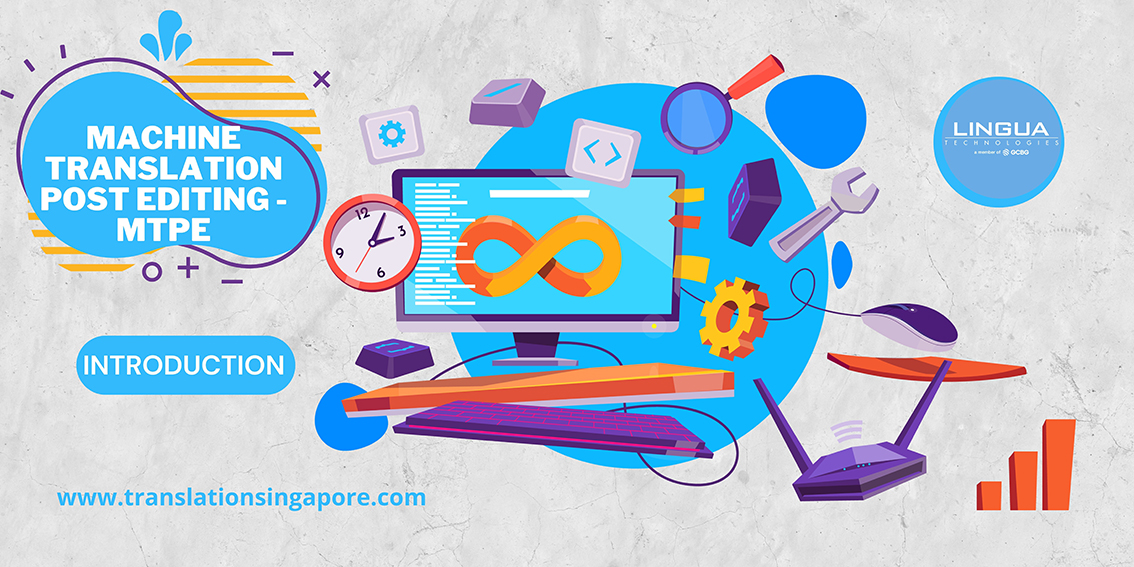What is MTPE – Machine Translation Post Editing?
MTPE involves the editing of machine-translated output by a human linguist. It is sometimes referred to as Post Editing Machine Translation (PEMT). In theory, it attempts to combine the efficiency and speed of machine translation with the expertise of human linguists. In short, MTPE is a process whereby a human linguist edits and corrects machine-translation output.
Two types of MTPE
Post-editing involves the correction of machine translation output to ensure that it meets a level of quality negotiated in advance between the client and the post-editor. The type of MTPE deployed should be agreed upon with the client before the commencement of a project. In general, there are two types of MTPE.
Light Post-Editing
Light post-editing aims at making the output simply understandable. Focuses on essentials like grammar, spelling and ensuring the accuracy of the translation during the edit.
Full Post-Editing
Full post-editing aims at making it also stylistically appropriate. Apart from the essential thing to look out for, the editor must also ensure that the style and tone are consistent and that all expressions are appropriately localized.
Best Practices for MTPE
To ensure the success of the process, MTPE should include the following three approaches:
- Source Text
- MT Engine
- Post-Editing
Missing any one of these approaches would render a sub-par final translation output.
Source Text
It is all about good content preparation. The old saying “garbage in, garbage out” cannot be truer when it comes to MTPE. In short, you must prepare the content for MT, and one of the ways is by clarifying and simplifying the writing with shorter sentences, active voice, and other best practices for a clear copy. You must ensure the following:
- Ensure that the source text is free of spelling or grammatical errors.
- Ensure that formatting is consistent.
- Ensure that terminology is consistently applied throughout the whole document.
- Avoid any complex or wordy sentences. Rule of thumb: try to limit sentences to 20 words.
MT engine
Not all MT engines work for all fields and specializations, nor do they all produce the same translation quality output. To produce translation output that can be post-edited, do take note of the following:
- Opt for a customized MT engine: Choose an MT built using data provided specifically by the company instead of a generic one. This will ensure the highest quality translation that conforms to the existing stylistic and terminology practices.
- A customized MT engine also ensures the highest level of data privacy.
- Alternatively, a specialized MT engine built with high-quality business data should be used versus a generic or free MT like Google Translate.
- Choose the best MT engine for the task. If you have a specific glossary or terminology related to a project/brand/product, consider starting to build a custom machine translation engine tailored to your business sector, market, or product type.
Post Editing
Human involvement cannot be eliminated fulling from the MT process. Post-editing is the most crucial process that will determine the usability and quality of the final translation output from MT.
It is important to include a team of human editors trained to understand the MT process to handle post-editing on the translation output from MT. For the best results from the post-editing process, keep in mind the following:
- Determine the quality level of post-editing required for the project.
Light post-editing (LPE) focuses on eliminating obvious errors or issues
Full post-editing (FPE) ensures that the content is fully localized, including adjustment of any cultural references that may be inappropriate.
- Be mindful not to under-editing or over-editing.
- Do not leave out any information in the source text or include information not found in the source text.
- Reference documents such as glossary & terminology should be provided for documents of technical and niche nature.
- It is a good practice to follow up the post-editing process with an analysis of the source text with all relevant parties, including the author, editor and client. The review and feedback will help improve the MT over time and help produce better translation output in the future.
Tools for Post Editing
Apart from selecting the Machine Translation engine most suited for the language pair and specialization, there are other tools that will help enhance the quality of the translation output for the post-editing process.
Translation Memory – a database of previously translated segments. When a similar source text stored in the TM appears, the MT will populate the empty field with the existing translation from the TM.
Termbase – a list of bilingual terms for a specific industry, brand, product, or company. Great for editors who are not well-versed in the specific subject. Good for keeping terms consistent.
Quality Assurance (QA) Tool – help spot errors and inaccuracies during translation and post-editing. They are used as a last line of defence.

